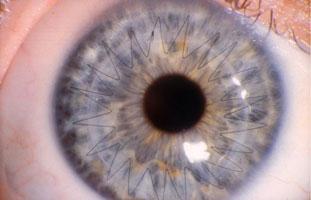
Corneal Transplants
The cornea is the transparent front portion of the eye that permits light to enter the eye and focus on the retina. Normally crystal clear, the cornea can become cloudy or misshaped, causing greatly reduced vision or blindness. Replacement of a cloudy cornea is the only means of restoring full vision. Diseased corneas can be replaced successfully through corneal transplants. A surgery using human donor corneas. Understanding the cornea is our specialty. We offer to treat and repair corneal conditions.
95% Success Rate
The success of the operation depends on the amount and type of damage the eye has sustained from disease or injury. The success rate can be as high as 95%. However, it is important to remember that vision can be restored to normal levels. Only if the remainder of the eye, including the retina and optic nerve, is normal.
Most Successful Organ Transplant Surgery
Approximately 50,000 corneal transplant operations are performed each year in the United States. The success rate of the procedure has increased dramatically in the past 20-30 years. Because of recent advances in research and surgical techniques. Corneal transplantation is considered to be the most successful of all organ transplant surgeries.
The Donor Cornea
Only the central portion of the cornea is involved in transplantation. The surgeon removes an appropriate portion of the patient’s cornea and replaces it with a similarly sized donor cornea. Which is then stitched into place. The normal diameter of the human cornea is 12mm. The majority of transplants have diameters of 7.5 – 8.0 mm, well within the perimeter of the cornea.
A corneal transplant is an extremely delicate microsurgical procedure performed with the aid of an operating microscope. One that magnifies the eye 10-25 times. The donor cornea is attached to the eye with stitches that are 1/5 the diameter of a human hair. A combination of two different types of stitching may be used in this surgery: running (continuous) stitches and interrupted (individually tied) stitches. The advantage of this technique is that it permits the surgeon to adjust the curvature of the cornea by selectively removing individual stitches after the surgery. Thereby allowing the patient better vision in a shorter period of time.
Donor Corneal Tissue
Corneas for transplant surgery come from individuals who have donated their eyes for the benefit of others to be used after their death. Donor corneal tissue can be used for up to seven days after the death of the donor. An eye bank network around the nation distributes donor tissue, usually within twenty-four hours. The eye bank screens all tissue carefully to ensure that it is healthy and in excellent condition. This includes screening for such diseases as hepatitis, syphilis, and AIDS. With few exceptions, donor tissue from individuals ranging in age from 2-70 is useable. Factors such as sex, race, and color of the iris of the previous vision of the donor have no influence on the success of the operation.






